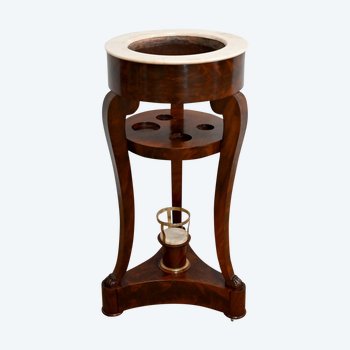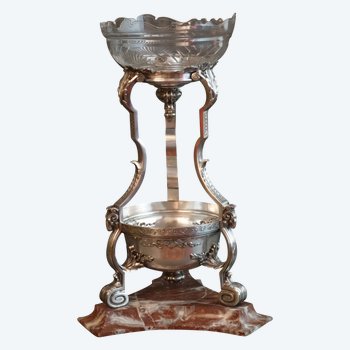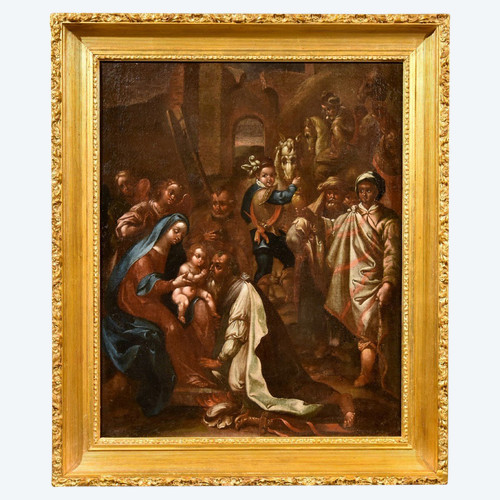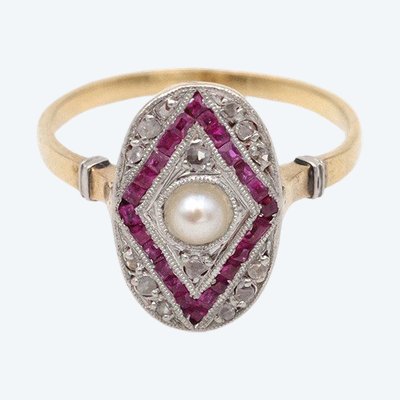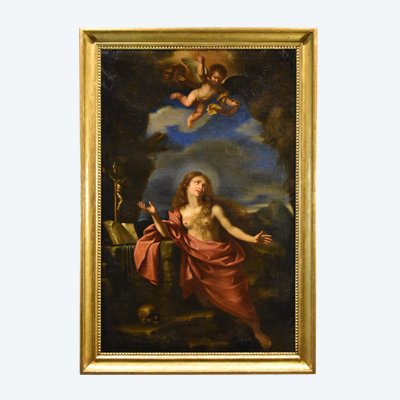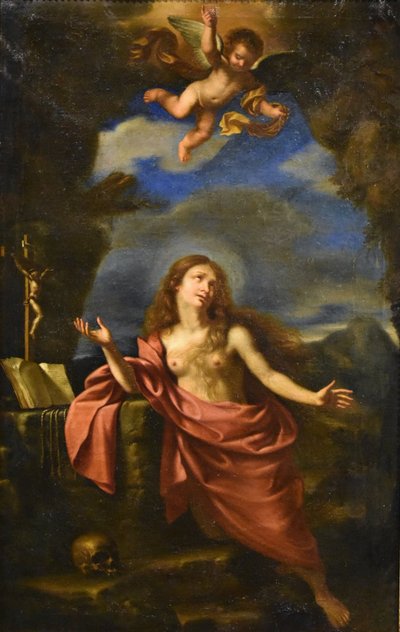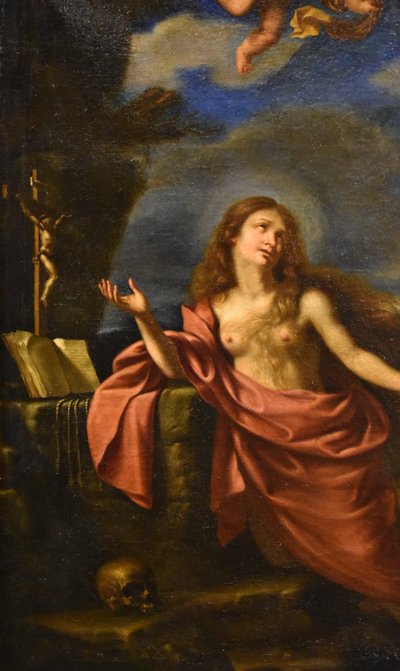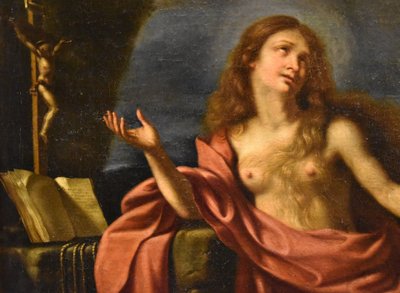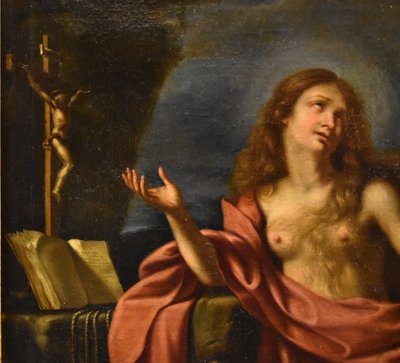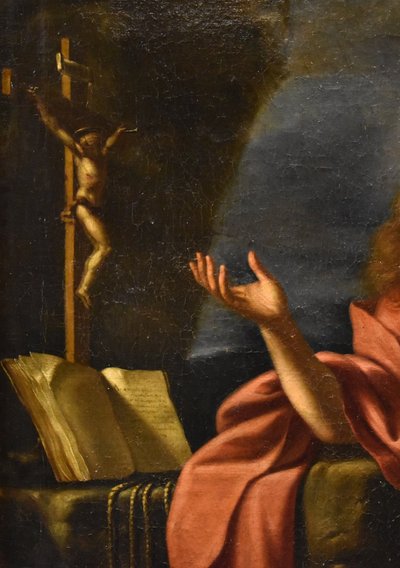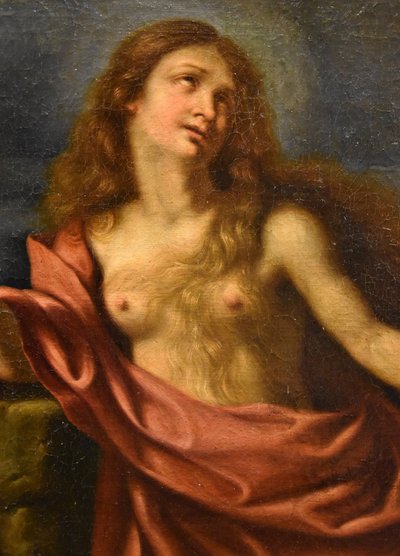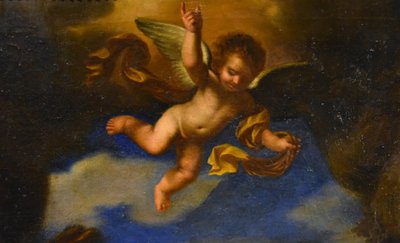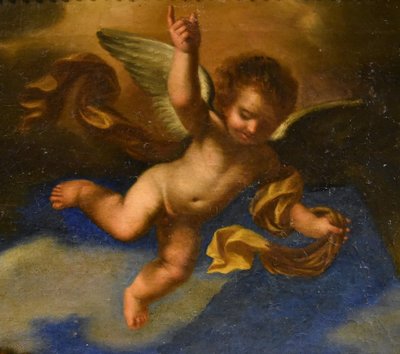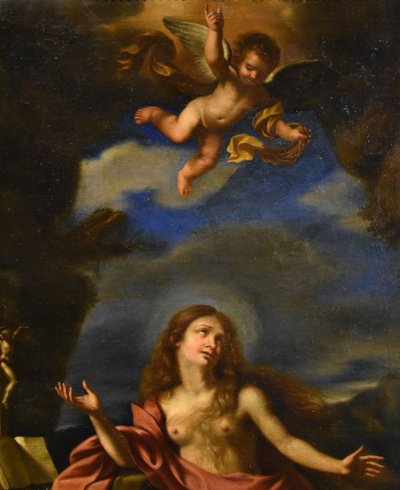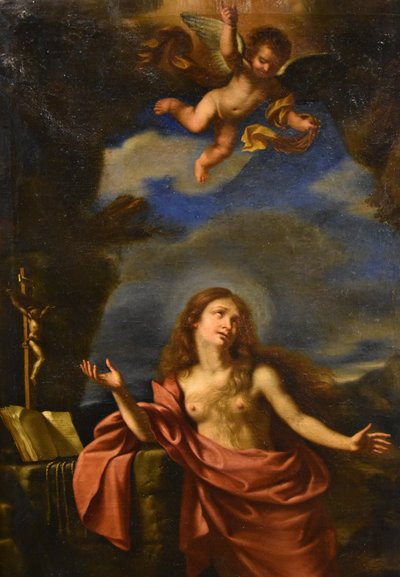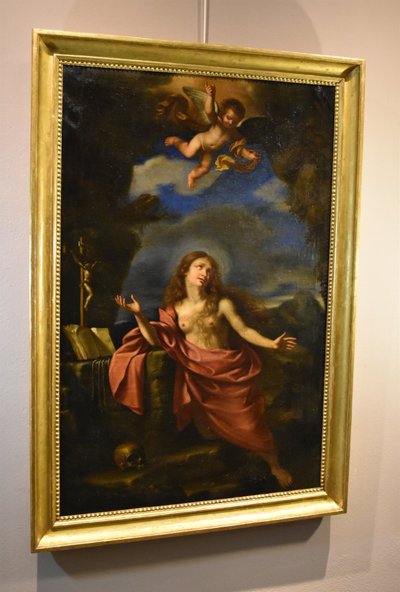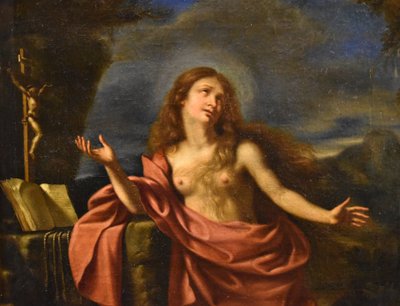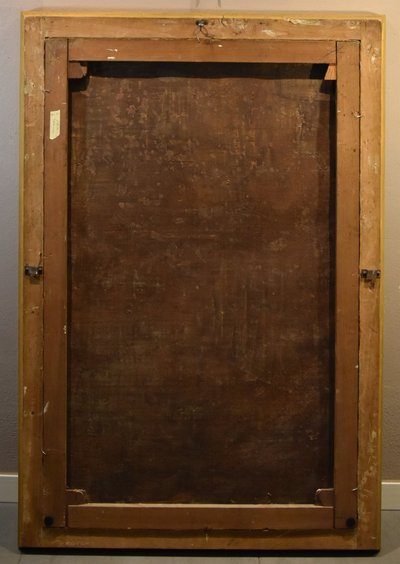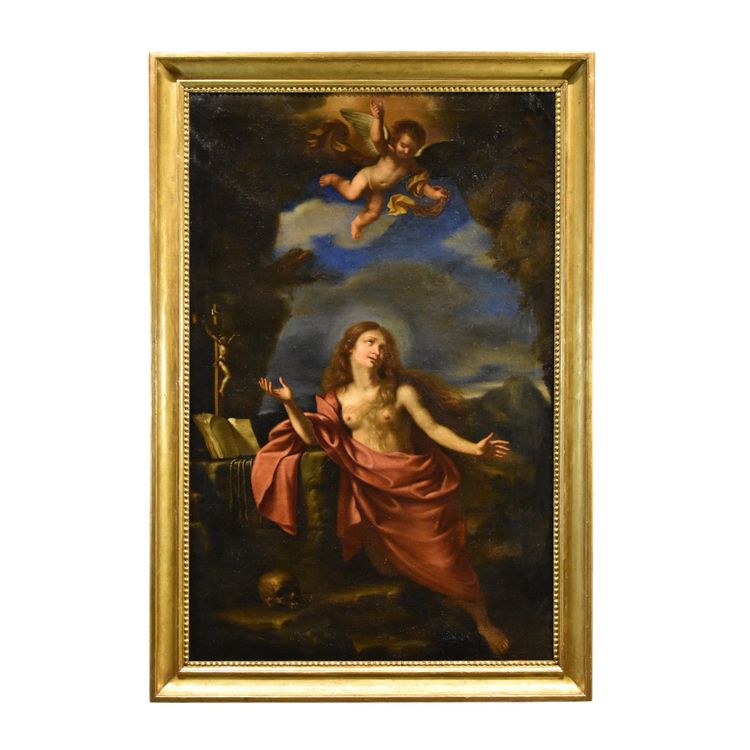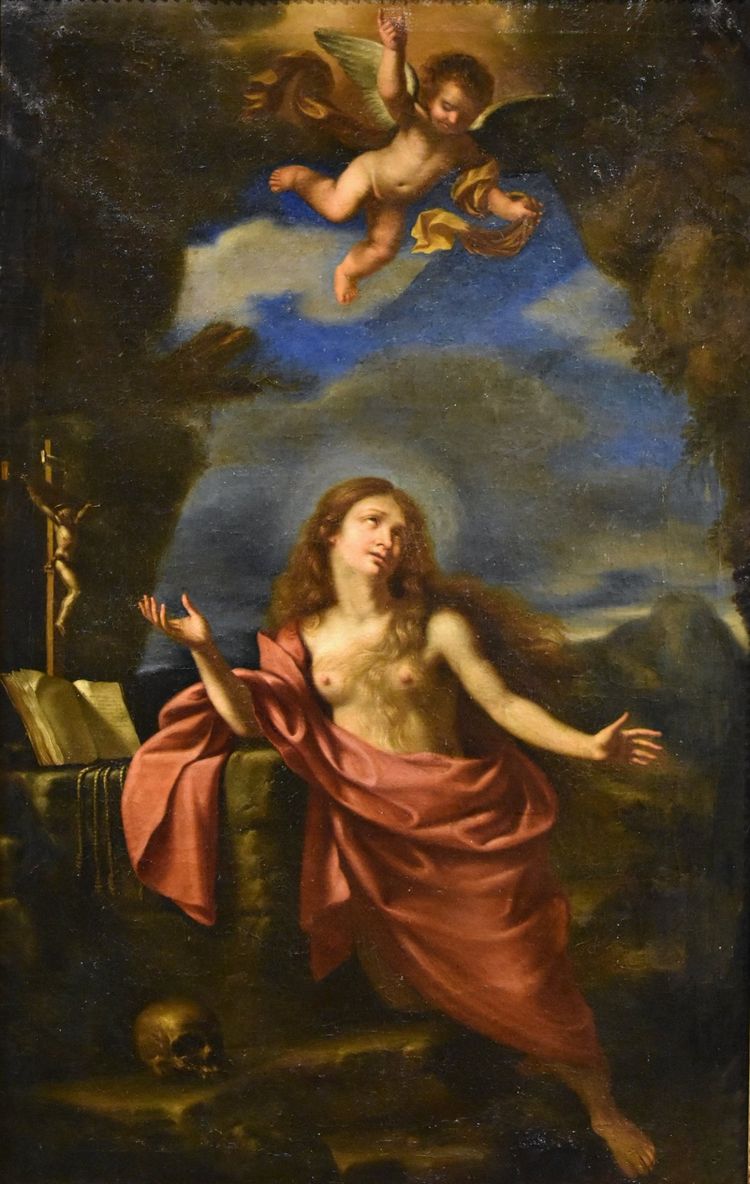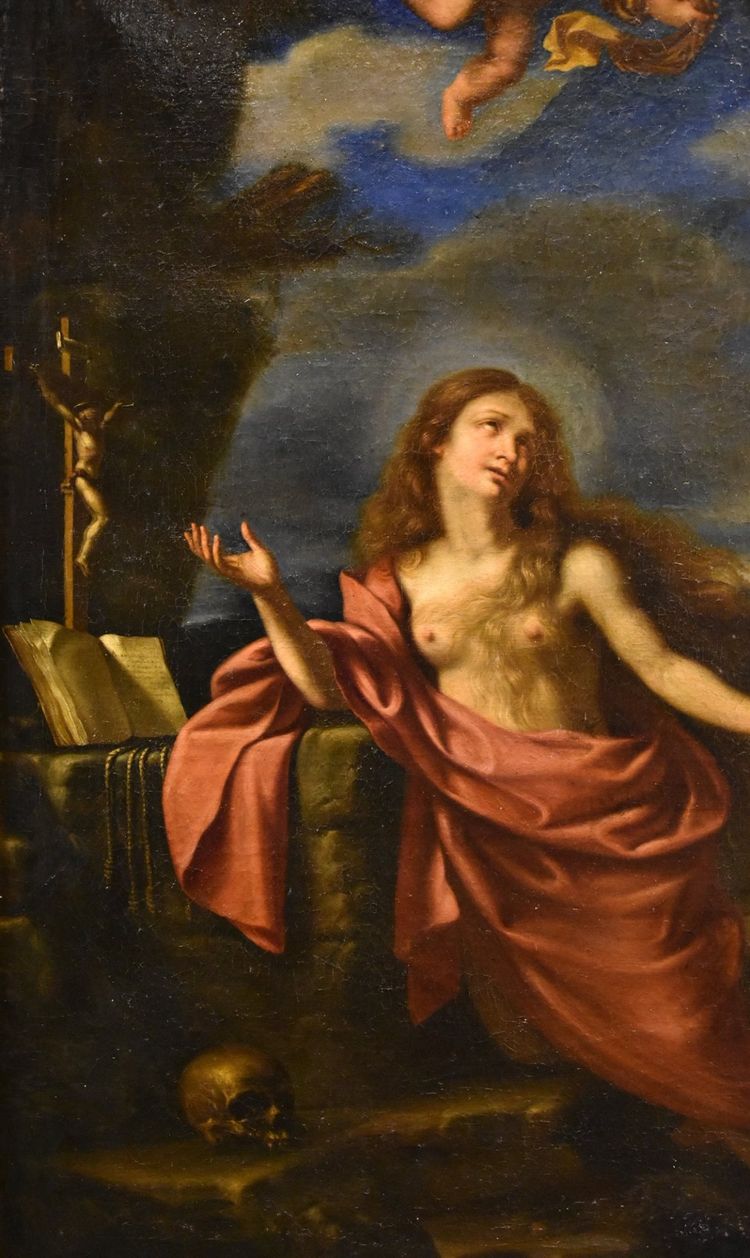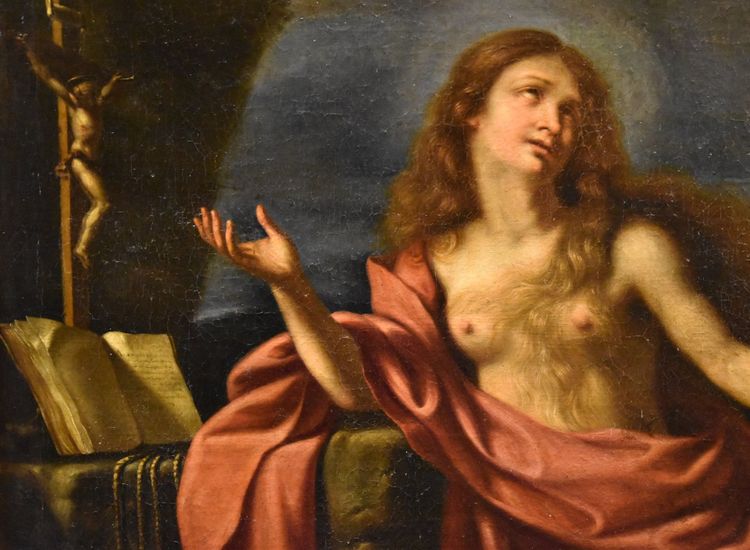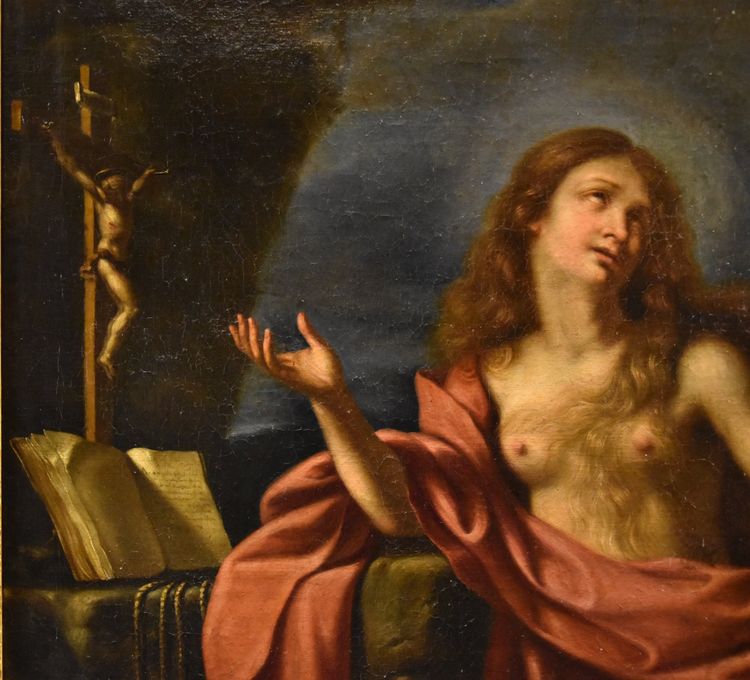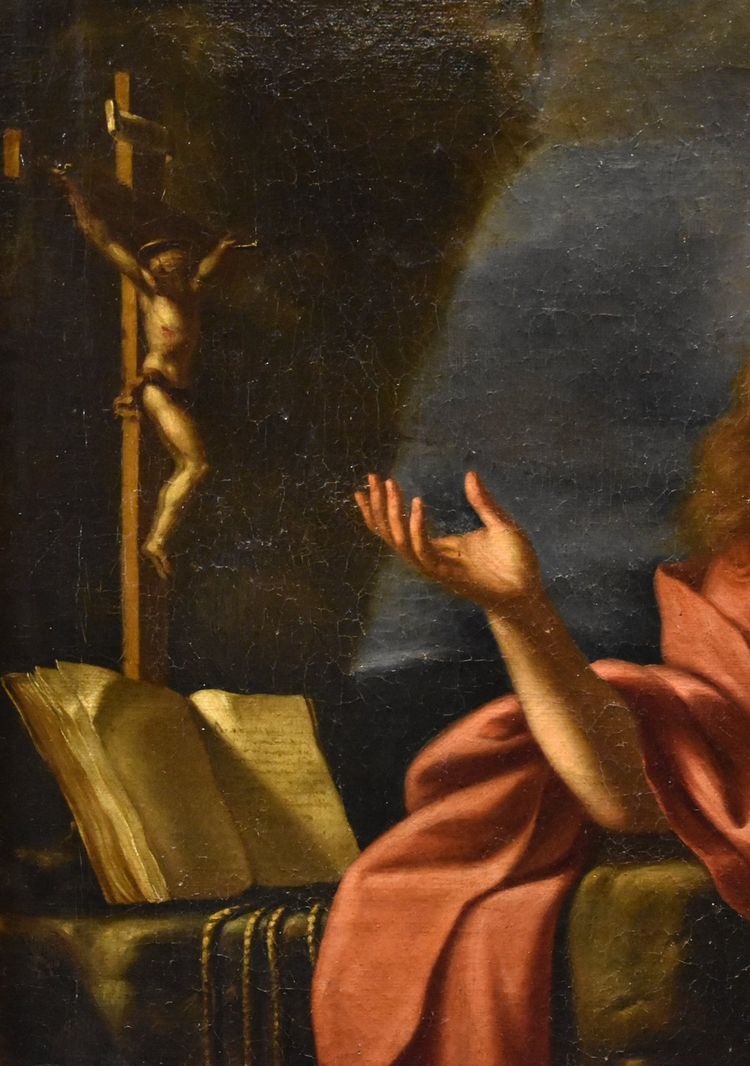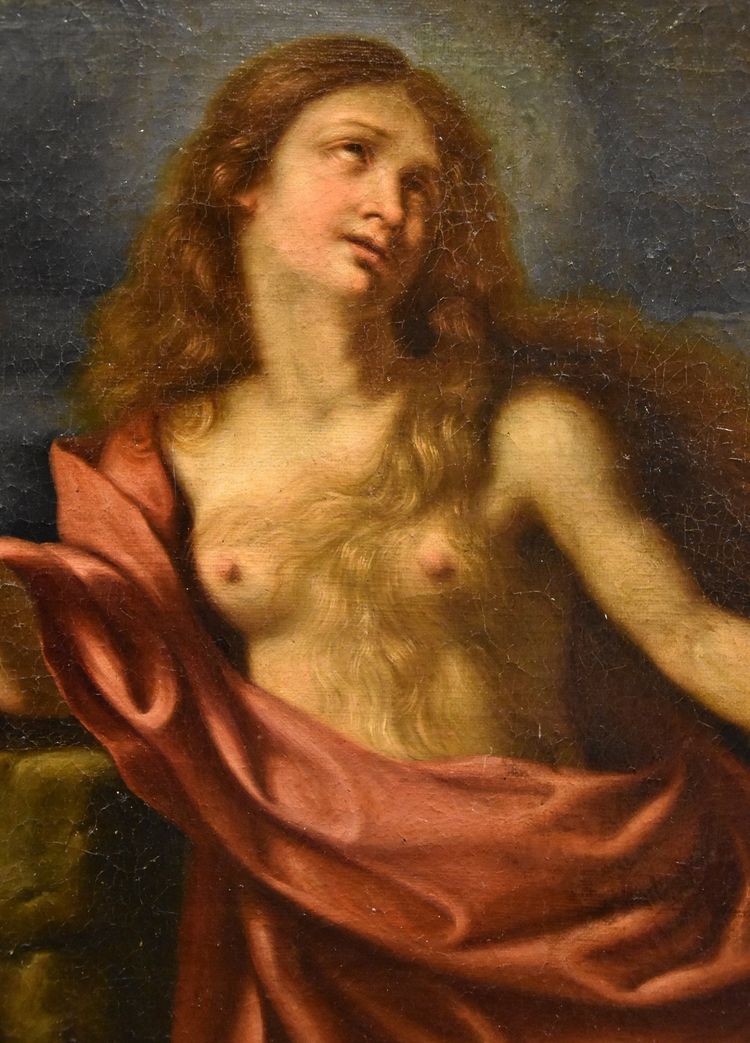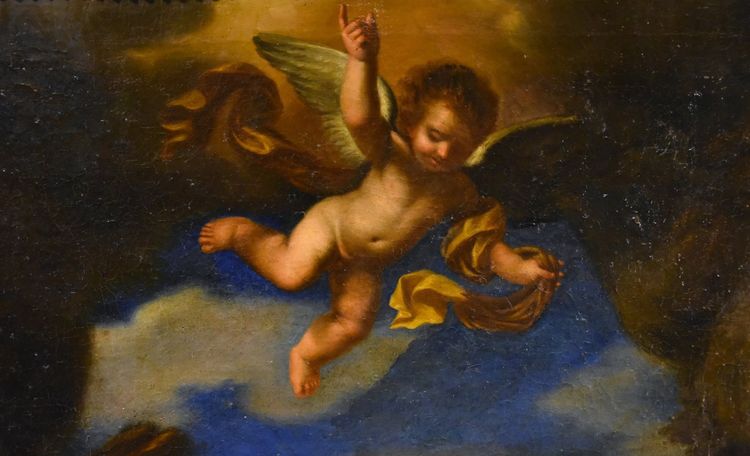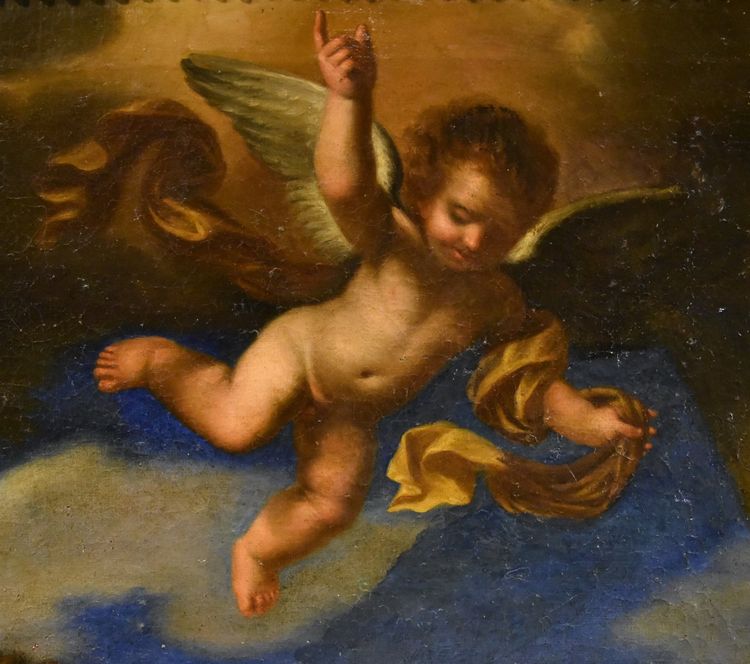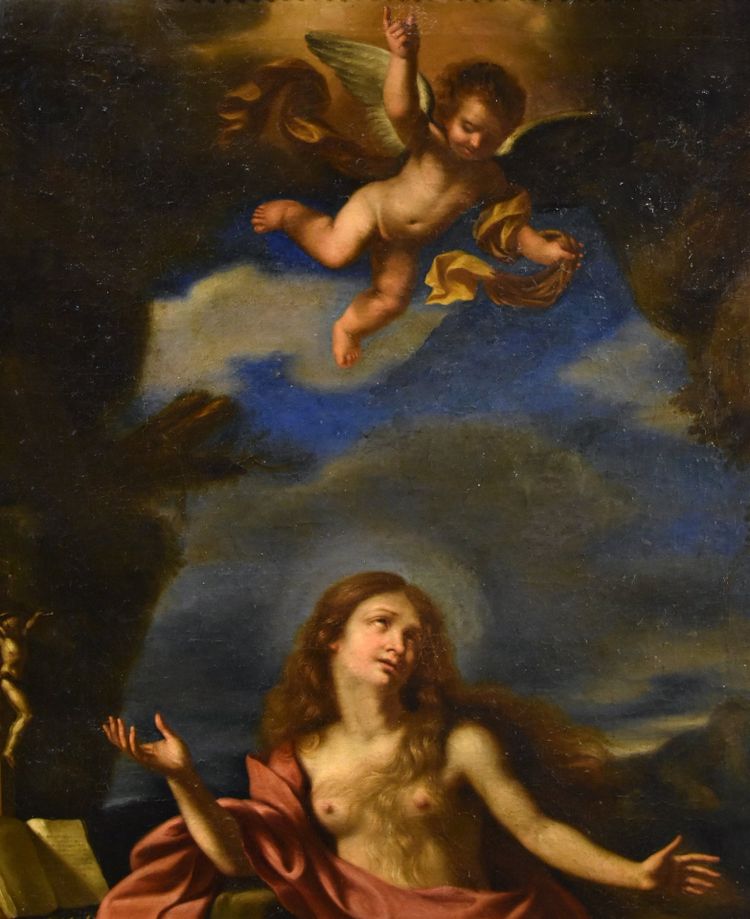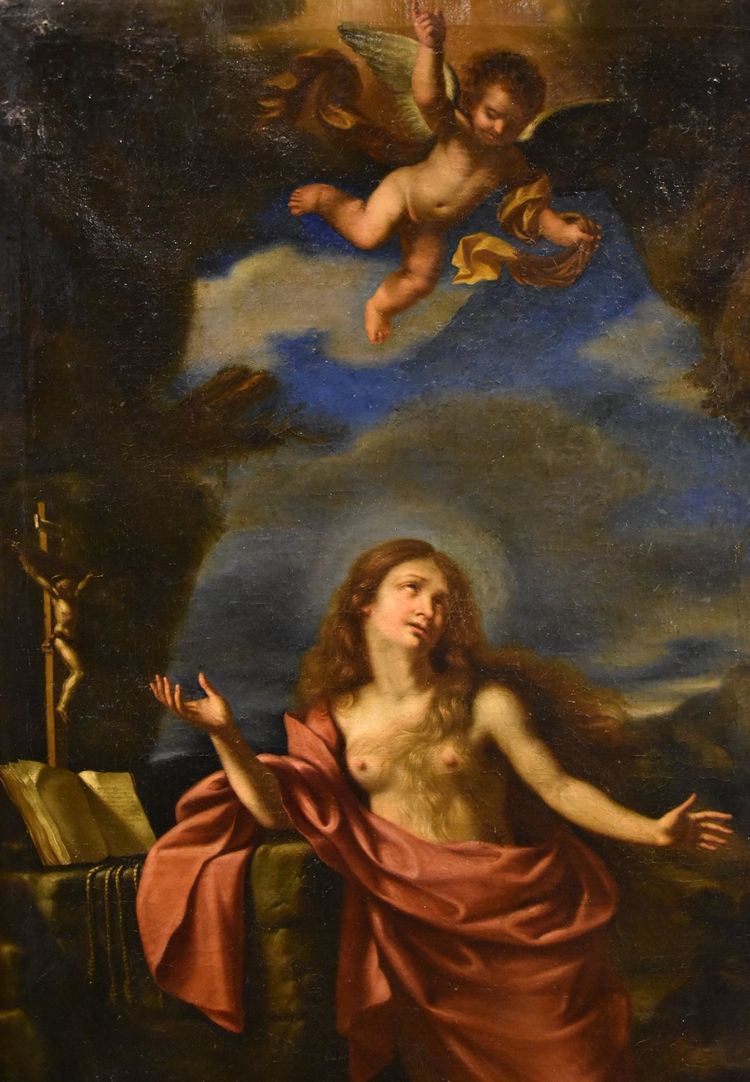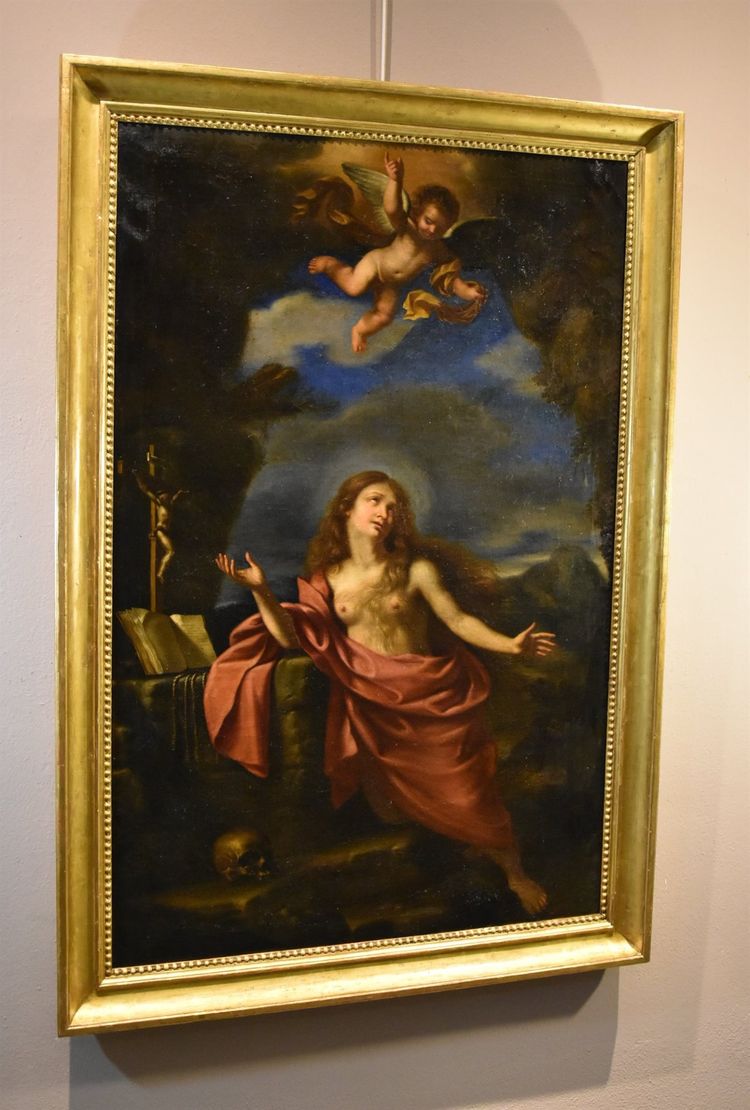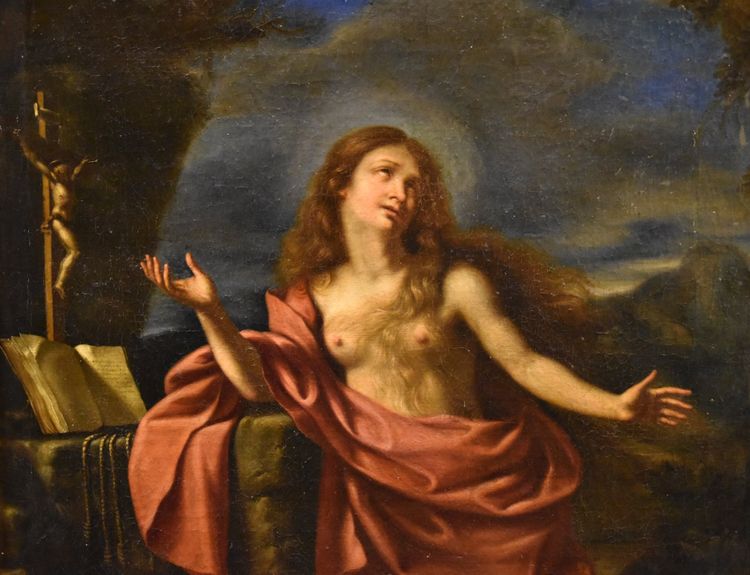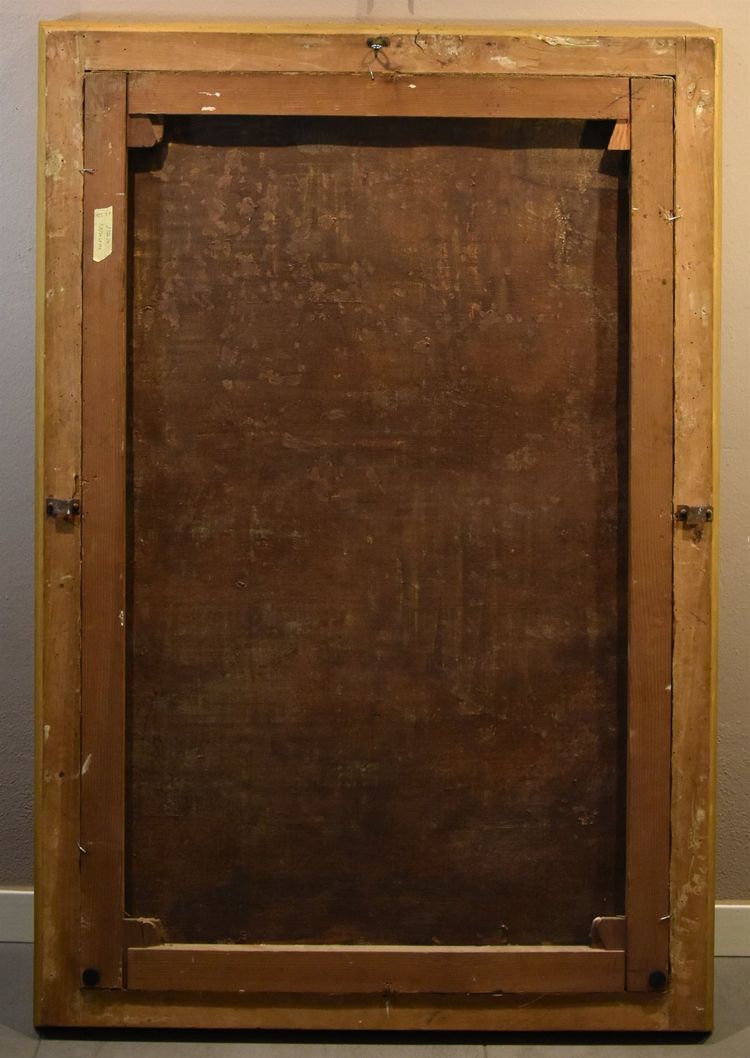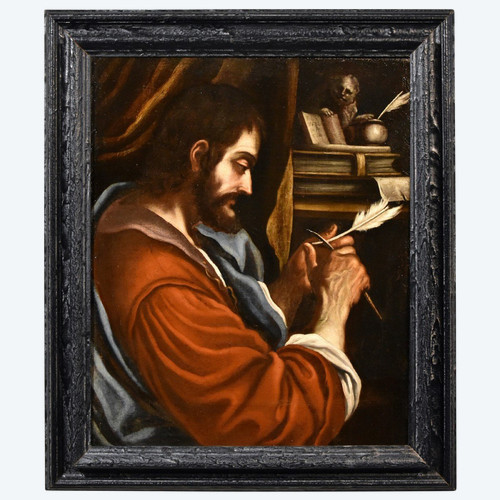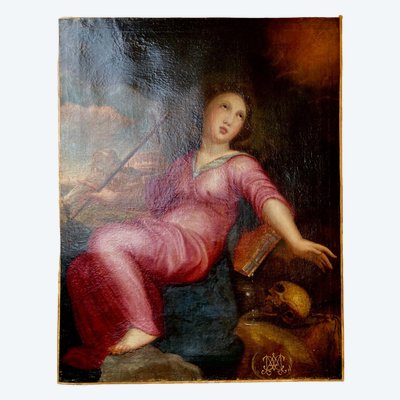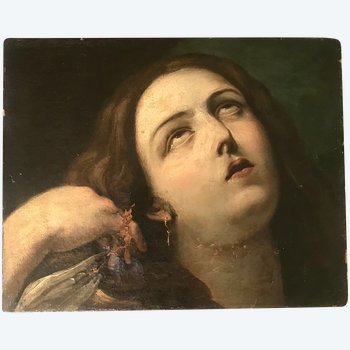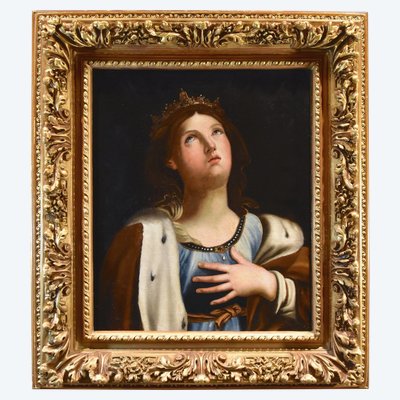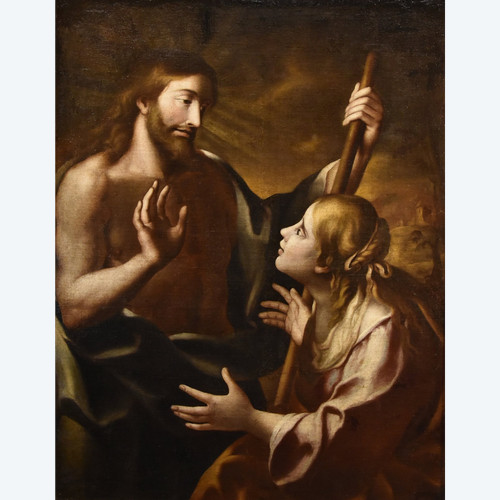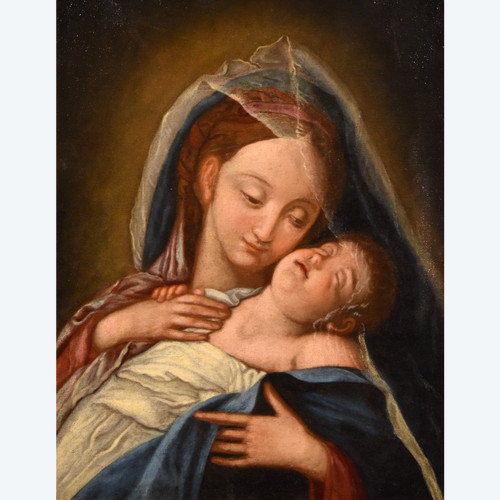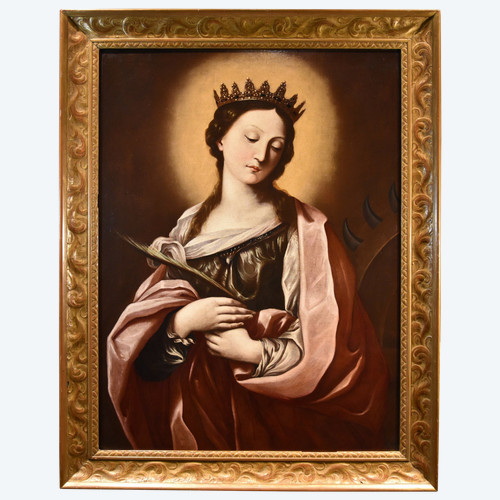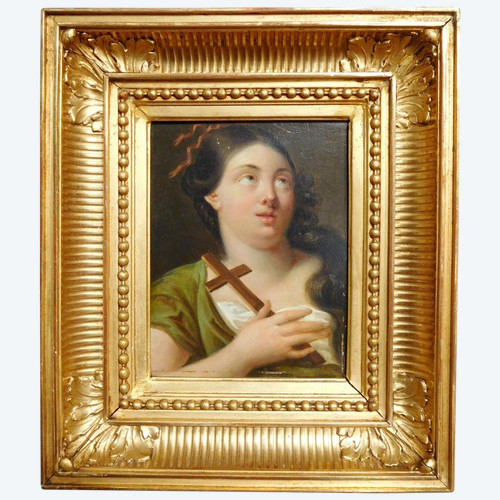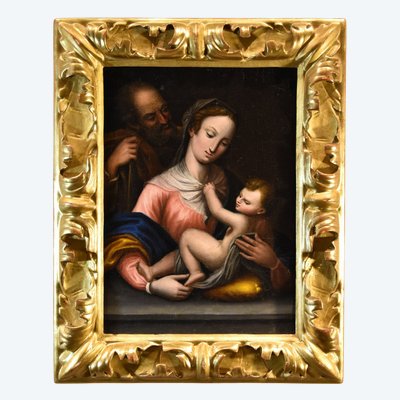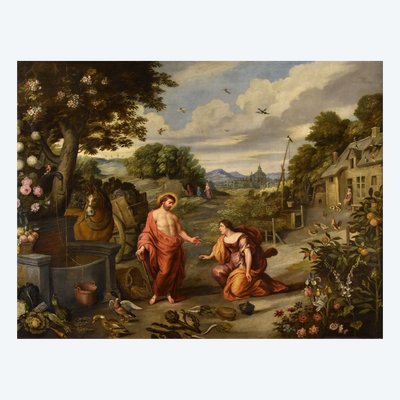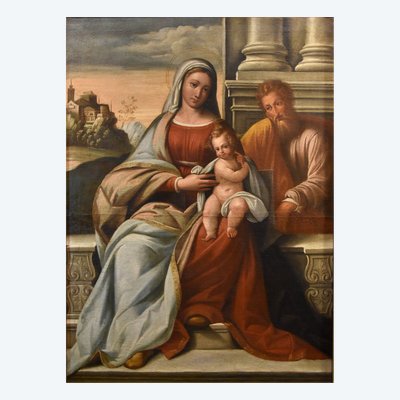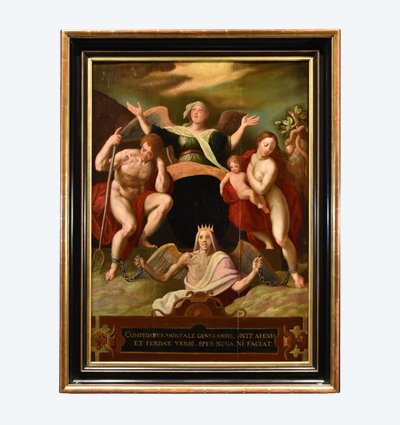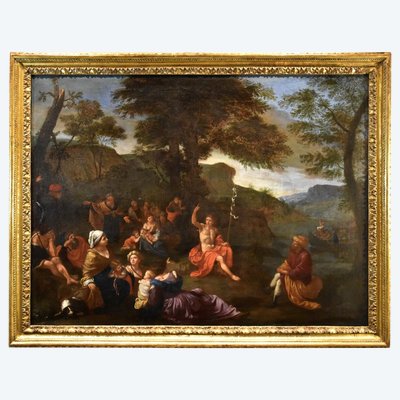This description has been translated and may not be completely accurate. Click here to see the original
Mary Magdalene in the Desert
Giovanni Francesco Barbieri, Il Guercino (Cento, 1591 - Bologna, 1666) Workshop of
Oil on canvas 122 x 78 cm In frame 136 x 92 cm
The painting presents us with a superb image of the penitent Magdalene, portrayed as an attractive young woman, mischievously undressed to remind us of her sinful past, her gaze full of devotion turned towards the angel messenger arriving from above.
The composition is made even more fascinating by her long, loose hair that falls softly over her body, revealing her breasts, a further reference to the strong femininity of this saint, who is both a sinner and a penitent, and therefore perpetually portrayed in the ambivalence between the sacred and the profane.
Stylistically, the work, which can be dated to the first half of the 17th century, clearly belongs to the Emilian school, and the Guercinesque characteristics undoubtedly suggest that it was executed by an artist from his workshop.
The iconography of the painting reinterprets a work by Guercino, “The Vision of Saint Jerome” (https://it.m.wikipedia.org/wiki/File:Visione_di_san_Girolamo_-_Guercino.png), painted in 1641 for the Confraternity of Saint Jerome in Rimini: the two works are similar in their setting, the composition of the scene, the treatment of the bodies of the protagonists and even in the pose and colours and the inclusion of the angel in the upper part of the painting.
Returning to our beautiful Magdalene, although Guercino's original work cannot be traced, there are other versions by his talented pupils and workshop, including that by Cesare Gennari (Cento, 1637 - Bologna, 1688), now in the Pinacoteca Civica in Cento (FE), considered one of the best talents to emerge from the prestigious teaching of the master. Gennari Cesare - Penitent Magdalene oil on canvas, 276x 171 cm, 1662, no. 0342 Civica Pinacoteca Il Guercino, Cento (FE) Link: https://bbcc.regione.emilia-romagna.it/pater/loadcard.do?id_card=161979&force=1
Although it is difficult to attribute our high-quality canvas to a specific artist, we can trace its authorship to the workshop of the great master, hypothesising that it was painted either by Cesare Gennari himself or by an artist close to his style, such as Giuseppe Maria Ficatelli, from whom the particular sense of light and vigorous naturalism derives.
Our painter follows the robust and synthetic naturalism typical of Cesare's style: the touch is refined but full of character in the depiction of Mary Magdalene, with her sensual flesh, particularly her breasts, which are barely concealed by her long, curly, golden hair.
The woman embodies a three-dimensional strength that makes her the focal point of the painting, around which everything else is coordinated, thanks in part to her diagonal pose, which emphasises her depth.
She kneels on a rock altar, on which there is a crucifix and an open book, as well as a skull at her feet, as a warning against Vanitas.
In this dark setting, with colours that are deep and functional to the message of faith that Mary Magdalene conveys, the only source of light illuminating the scene is the angel at the top of the painting, pointing to the true source of that glow, which stands out against the magnificent lapis lazuli blue of the sky.
ADDITIONAL INFORMATION:
Good condition, with some restoration work consistent with the age of the painting, complete with gilded frame (19th century).
The work is sold complete with certificate of authenticity and descriptive iconographic information sheet.
We take care of and organise the transport of purchased works, both in Italy and abroad, through professional and insured carriers.
It is also possible to view the painting in our gallery in Riva del Garda, where we will be delighted to welcome you and show you our collection of works.
Please contact us, without obligation, for any further information.
Follow us on:
INSTAGRAM https://www.instagram.com/galleriacastelbarco/?hl=it
FACEBOOK https://www.facebook.com/galleriacastelbarco/
Ref: 1J4HCL2CU5

